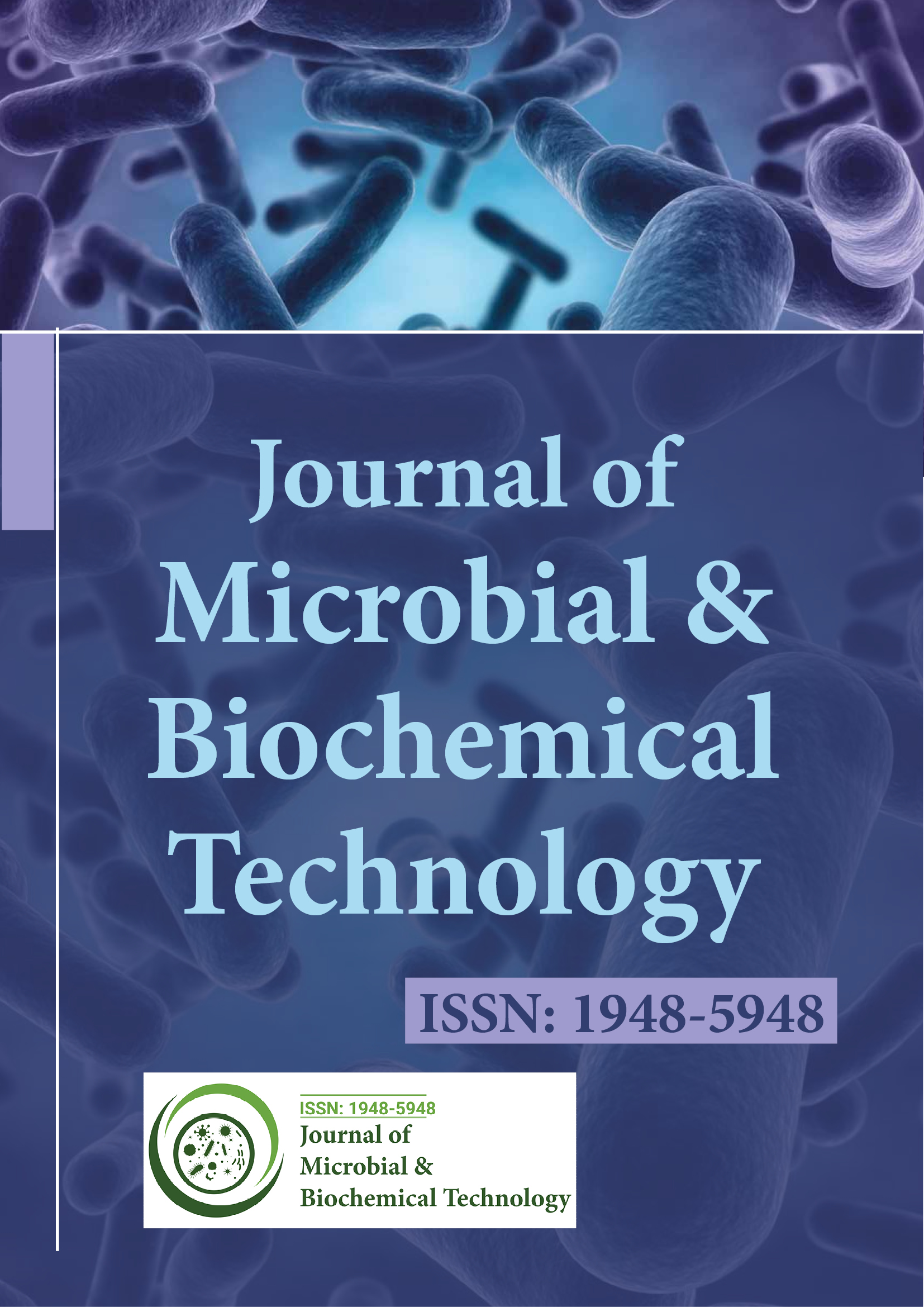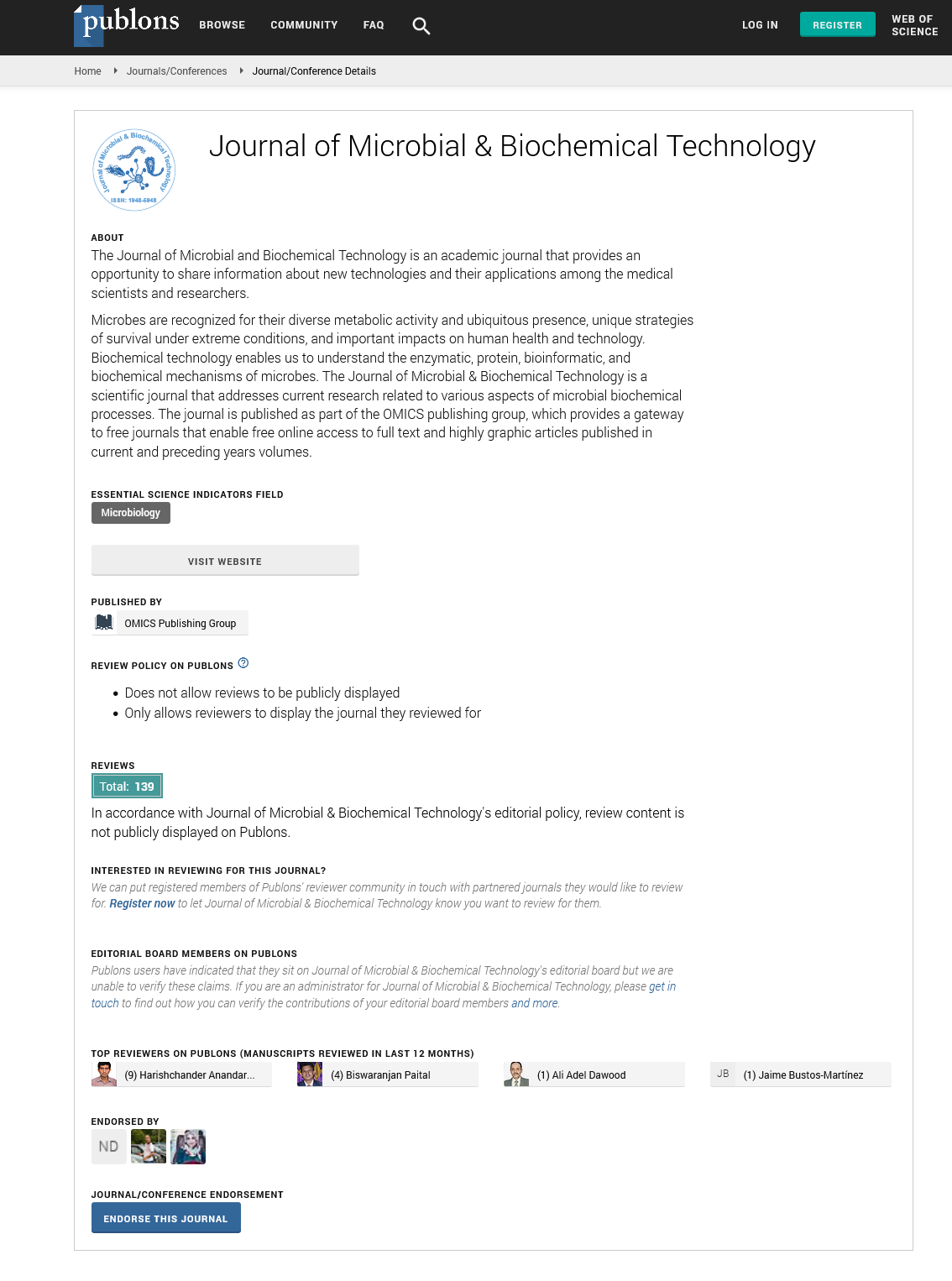Indexed In
- Academic Journals Database
- Genamics JournalSeek
- Academic Keys
- JournalTOCs
- China National Knowledge Infrastructure (CNKI)
- Scimago
- Access to Global Online Research in Agriculture (AGORA)
- Electronic Journals Library
- RefSeek
- Directory of Research Journal Indexing (DRJI)
- Hamdard University
- EBSCO A-Z
- OCLC- WorldCat
- SWB online catalog
- Virtual Library of Biology (vifabio)
- Publons
- MIAR
- University Grants Commission
- Geneva Foundation for Medical Education and Research
- Euro Pub
- Google Scholar
Useful Links
Share This Page
Journal Flyer

Open Access Journals
- Agri and Aquaculture
- Biochemistry
- Bioinformatics & Systems Biology
- Business & Management
- Chemistry
- Clinical Sciences
- Engineering
- Food & Nutrition
- General Science
- Genetics & Molecular Biology
- Immunology & Microbiology
- Medical Sciences
- Neuroscience & Psychology
- Nursing & Health Care
- Pharmaceutical Sciences
Abstract
Purification, Amino Acid sequencing and Thermostability of an Extracellular Low Molecular Weight Esterase Produced by Bacillus Subtilis NRRL 41270 in Fermentation
Papagianni M and Papamichael EM
Extracellular esterase activity in Bacillus subtilis NRRL 41270 fermentation broths was found to reside in a small protein with a molecular weight less than 10 kDa. Following purification, esterase activity on fluorescein dibutyrate was estimated at 12 U/min/mg proteins. Enzyme saturation was observed at 5 μM substrate concentration. The produced esterase hydrolysed tributyrin. Its specific activity was estimated to be 17.8 μmol acid released/min/mg proteins. The small protein was subjected to size exclusion chromatography, SDS-PAGE and amino acid sequencing. Analysis revealed a sequence of the following amino acid residues: eevaetysfyhitphdystshispapvqffspap, according to which the molecule has 34 amino acid residues and a calculated molecular mass of 3853, which was in accordance with the gel filtration and SDS-PAGE results. Sequence based analysis and use of bioinformatics tools showed no significant similarity with known proteins while revealed a strongly hydrophobic molecule, with a α-helical conformation in the N-terminal, the rest of the molecule being β-sheet-rich. The enzyme appeared to be thermostable with more than 85% of the original activity maintained after 120 h incubation at 60°C. The producer organism and the features of the micro enzyme, suggest the case of a biotechnologically interesting biocatalyst that should be further researched in terms of its stability and production characteristics.

